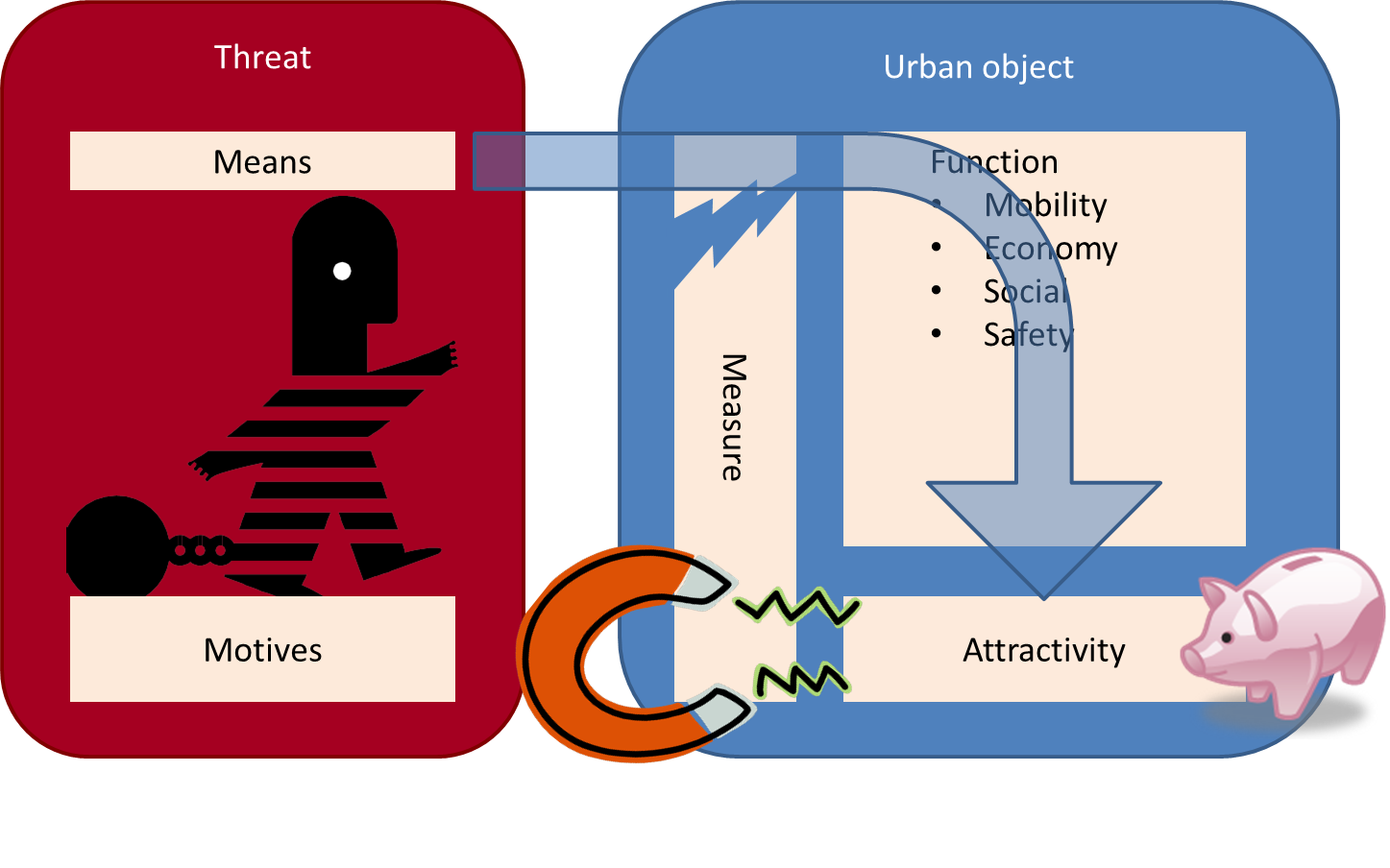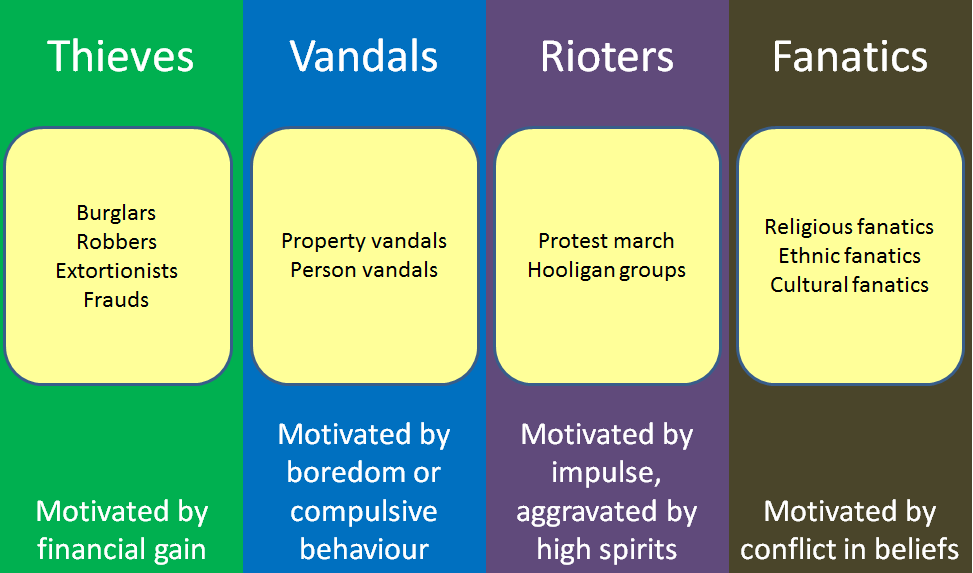Difference between revisions of "Human intent"
m (Text replace - "mitigative" to "mitigatory") |
|||
| Line 19: | Line 19: | ||
== Sources of threats == |
== Sources of threats == |
||
Sources for |
Sources for [[threat]]s in the category of human intent are persons with the intent to do harm. In general, these persons act contrary to the law and can be labeled criminals. |
||
A classification that is developed<ref>Developed in the [http://www.securehaven.nl/ Secure haven project (in Dutch)] and adapted for use in the [[Concept level tools#the risk assessment tool|risk assessment tool]] and this wiki.</ref> for use in the urban environment that the types of crime most relevant to urban design, is based on the motivation of perpetrators: |
A classification that is developed<ref>Developed in the [http://www.securehaven.nl/ Secure haven project (in Dutch)] and adapted for use in the [[Concept level tools#the risk assessment tool|risk assessment tool]] and this wiki.</ref> for use in the urban environment that the types of crime most relevant to urban design, is based on the motivation of perpetrators: |
||
Latest revision as of 09:59, 6 February 2014
Human intent is a threat stemming from wilful action of people.
Motives
Motives for the threat of human intent can be found in all types of motives for criminal behaviour, i.e. financial gain, amusement, compulsive behaviour, impulse and fanatic motives.
Means
The extent to which perpetrators are successful, depend on several factors. The threats (persons who by wilful action can do potential harm to the object) have a motive that drives them. The extent to which they are attracted to choose a particular object as target depends on their perception of the attractiveness of the object (for instance money for a thief or blank walls for a graffiti artist) and their perception of the success rate of the act. This depends on two things:
- The means of the perpetrator (for example a burglar with only a screwdriver or one with a welding torch) and
- the vulnerability of the object, i.e. the weaknesses that can be exploited by the perpetrator (for example weakly guarded entrances to the object). These weaaknesses can be reduced by implementing mitigatory meassures. Weaknesses in this defence can be exploited by criminals. In the illustration, this is represented by a 'crack' in the mitigatory measures.
This is illustrated in the figure below.
The reason an object should protect itself against such threats, is that threats in their attack will damage the function of the object (such as providing a perception of safety for inhabitants, fulfilling its economic function in the urban environment or protecting for future attacks). The way to prevent outside threats from threatening the object, is by implementing mitigatory measures. These are meant to decrease the likelihood or impact of a successful attack. One should realize that measures and means are involved in a 'arms race'; there is no measure that with enough means cannot be overcome. Measures will seldom annihilate a threat, only reduce it. The aim of measures is therefore not to make crime impossible, but only to make it unattractive enough that threats will decide it isn't worth the risk. (see the page on the economics of criminal and terrorist behaviour)
Sources of threats
Sources for threats in the category of human intent are persons with the intent to do harm. In general, these persons act contrary to the law and can be labeled criminals.
A classification that is developed[1] for use in the urban environment that the types of crime most relevant to urban design, is based on the motivation of perpetrators:
The first category of criminals (thieves) is motivated by financial gain. They can be subdivided into:
- Burglars, who gain wealth by illicitly entering buildings,
- Robbers, who gain wealth by force of threat.
- Extortionists, who gain wealth by use of coercion and
- Frauds, who gain wealth by intentional deception
The second category of criminal (vandals) is motivated by amusement (such as bored youth bothering passers-by) or by compulsive behaviour (such as pyromaniacs). They can be sub divided into:
- Property vandals, who seek damage or destruction of property, and
- Person vandals, who assaults other people physically or mentally.
The third category (rioters) is motivated by impulse, often under group pressure, often in a situation with a high level of excitement or arousal. Two subtypes of rioters are:
- Protesters and
- Hooligans.
The fourth and last category is motivated by conflict in beliefs (fanatics) and tries to impose rules or beliefs upon others by use of coercion. The level of coercion can vary a great deal, ranging from mental abuse to mass killing. Subtypes of fanatics are:
- Religious fanatics, who try to impose religious beliefs or religious rules
- Ethnic fanatics, who coerce specific ethnic groups and
- Cultural fanatics, who try to impose cultural beliefs (for example about animal welfare in the fur industry, globalism or conservationism) upon others.
Footnotes and references
- ↑ Developed in the Secure haven project (in Dutch) and adapted for use in the risk assessment tool and this wiki.

